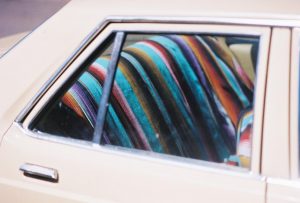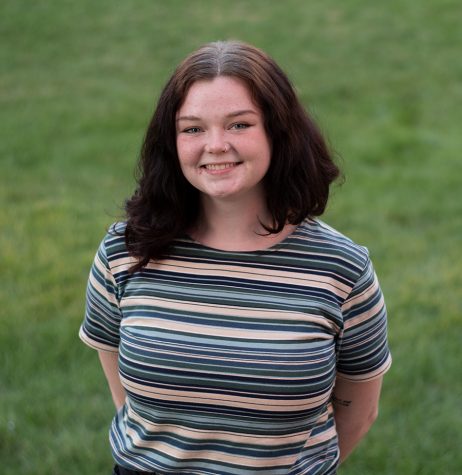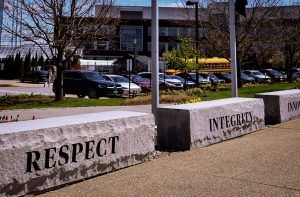Q&A: Four student artists talk creativity on campus
April 17, 2018
Student artists can be found all over campus. Culture writer Sarah Robinson sat down with a few to talk about their work and get their take on the arts at UVM.
First years Riya Padukone and Keerthi Onkaram are dancers from New Hampshire. They grew up together and are roomates. Onkaram specializes in classical Indian dance and contemporary, while Padukone dances simply for pleasure. They are both part of the on-campus Bollywood dance group Jazbaa.
Junior Cam Gilmour is a jazz musician and saxophonist and is currently working on a new album called “Alone With the Moon.”
Senior Tyler Fletcher is a photographer from Massachusetts who is currently wrapping up his last semester at UVM.

A photography project by senior Tyler Fletcher.
Robinson: Think back to when you started doing what you do. Was there a specific moment where you said, “I want to continue doing this”?
Onkaram: I’d watch home videos and my parents always took videos of me dancing, so I feel like it was always kind of in me.
Padukone: When I was little my parents made me dance but then I never really did anything after. In high school I wanted to start, but I was too old to start, so I just kind of do it for fun.
Robinson: What’s the hardest part about being an artist in college?
Onkaram: We don’t get a lot of reasonable studio times so we’ll have to practice around like 9:45 to 11 or so, so it eats into time that we should be doing work, so that’s probably the most difficult thing. The dance itself is not difficult. There’s only one or two studios for practicing, so everyone’s fighting to get them, too.
Fletcher: It’s like unnecessary competition. Sometimes competition can be beneficial, but when it comes to fighting over the resources like studio space…
Robinson: Yeah, everyone should be able to have a space. Especially I feel like with all the dance teams, you’d want to be supportive of everyone and go to everyone’s stuff.
Fletcher: We spend a whole semester putting together films, and we’d go and show them downtown at Radio Bean or something like that, and it was cool because our little class showed up, but none of the department heads knew that we would put on these little shows, so there did seem to be a bit of a disconnect.
Glimour: A challenge that I have, which, I don’t think I would change anything about it, but a lot of what I do during the week is my own stuff, it’s not related to class at all. I write a lot of my own music, and I’m working on this album right now, so I get home from class and grind away at that and don’t do my other homework. But it’s totally worth it, but totally a challenge.
Robinson: What are some of the best parts of being an artist in college?
Glimour: The people for me. It’s a once in a lifetime opportunity. I get to live in an arts program. This kid Carney, who I have met before, today we had a rehearsal for my band he came with another guy, and it was awesome. And that never would have happened if I didn’t go to school here.
Onkaram: I like being able to be a part of something. I’ve never been a community active person, so it’s nice to have those groups. When I first decided to go to UVM, I wasn’t really happy about it in terms of diversity, there wasn’t going to be any and I grew up in a really white area. The first time I actually felt like I belonged was at Jezba.
Fletcher: When I lived in L/L in Integrated Fine Arts, and that was great because I was able to meet other photographers who were like-minded. I learned that it wasn’t a waste of time to be studying art in school. If you have a swipe-card, Williams is open 24/7, so you can just live in there. From top to bottom there’s a clay studio with a kiln in the basement, and computer labs and a darkroom, so it’s like everything you could need.
Robinson: Who inspires you?
Padukone: Is it bad to say [Keerthi] inspires me? She always make me practice, she says “Come on Riya we need to practice,” she helps me learn the steps for Bollywood.
Fletcher: There are other students who inspire me. When you see a contemporary of yours do something great, it suddenly seems very doable. When someone you know, or someone at your skill level give or take does something really creative, that catches your attention, and it seems accessible.
Glimour: That’s a great way to put it. The more I learn about art, the more I’m like, “oh my god i know nothing.” But when you hear people who are similar to you and they blow your mind, wow.
Fletcher: It suddenly makes it less mysterious. When you are living with people who are studying all these other art forms, that really helps, makes it more accessible. All the University really needs to do is make the arts accessible: make the tools accessible, the studio space accessible, and then for everyone else, make performances and galleries accessible.







